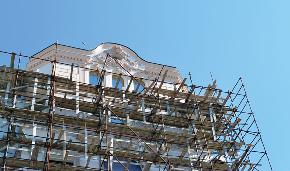The life science sector continues to expand at record pace, with quicker and more consequential product development leading to substantial real estate development. GlobeSt.com spoke with Gregg Domanico, James Bennett and John Hundley of Kidder Mathews, the largest independent commercial real estate firm on the West Coast, about California’s high-demand markets, capital trends, and development approaches.
“The key driver on the West Coast is a combination of leading research institutions that are turning out world-class scientific discovery and the access to capital,” said Bennett, EVP in Kidder Mathews’ San Francisco office. “We focus on the research, but it’s also a very capital-intensive industry, and California has significant resources in the venture capital community, especially in the Bay Area.”
Thanks to Big Tech, life science researchers are now leading in pace of discovery, too. What used to take six months to reach a critical junction or discovery point now could take weeks or days, Bennett added. Analytical and other advancements lead to faster research, which has also helped decrease the failure rates of companies.
“Going back five to seven years, the automation influence from Silicon Valley has been tremendous,” said Domanico, managing director in the San Francisco metro. “The genomic revolution has translated into quicker research. Also, almost every biotech firm has a software component, where with 3D modeling they can simulate trials much faster. I think we’re headed toward significant growth, double or triple the size, in the next 10 years.”
Kidder Mathews reports vacancies approaching zero in most submarkets around Northern California and lease rates continuing to climb with Class A space fetching over $7 per square foot NNN. In San Diego, new construction rents in prime submarkets have increased 25 percent year over year. The cost of building new life science facilities has doubled over the past five years to $300 and $350 per square foot, according to Domanico.
“The demand side of life science is through the roof,” he added. “We’ve doubled the amount in the Bay Area and are tracking four million square feet of demand on a regular basis.”
“Approximately 20 percent of Series A funding is being allocated to lab space, a proportion that should only increase,” said Hundley, EVP in Kidder Mathews’ San Diego office. As a result, companies will be forced to be more efficient with their space. With the office market still slowed by the pandemic, many landlords are looking to convert buildings to lab space, but that requires a tremendous amount of skill and understanding, as well as the right floor loading, floor to floor heights, and other extremely costly structural requirements.
Thanks to unlimited capital, most life science companies have become fully integrated. The pharma companies they used to partner with have come to the Bay Area and set up 200,000 to 300,000 square-foot facilities. Those same companies now have plans to expand. Also, the impressive sector growth has attracted big money players from other industries. Apple is expanding its footprint in the middle of University Town Center, San Diego’s premier life sciences submarket, according to Hundley, EVP in Kidder Mathews’ San Diego office. Domanico and Bennett also report sector movement by Amazon, Google and Elon Musk.
Life science’s agility could not have been more critical during the pandemic. That need for product speed will continue as the healthcare industry battles COVID-19 variants. The lessons from 2020 — which double as sector affirmation — didn’t end there: the disruption of global supply chains has created more impetus for the onshoring of production.
“The pandemic surprised us all, including real estate and life science professionals,” said Hundley. “As terrible as that has been, it’s driven us in a positive direction.”

















 Copyright © 2024 ALM Global, LLC. All Rights Reserved.
Copyright © 2024 ALM Global, LLC. All Rights Reserved.